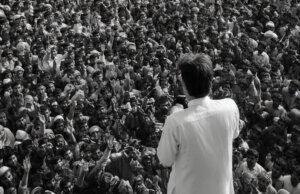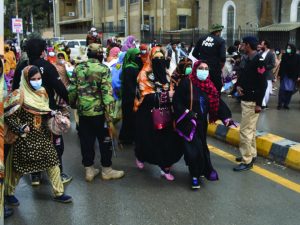Gender budgeting- a tool for gender removing inequalities
Mehfooz Ali Khan
Article 25 of the Constitution of the Islamic Republic of Pakistan says that there will be no
discrimination among the citizens on the basis of sex. It means that the rights of men and
women shall be equal. Gender equality is a basic fundamental right in any self-respecting
society. Do ground realities substantiate this assertion? Are there even playing grounds for
both genders? If not, why it is so? And how can gender mainstreaming be achieved?
Gender Responsive, Gender Sensitive and Gender Aware budgeting
There are many policy options to reduce this imbalance but budget is important as a policy
and planning instrument for governments that can be used for reaching the goal of Gender
Equality. Gender Responsive, Gender Sensitive and Gender Aware budgeting in a country,
region, or a province can create enabling environment to bring equality? The fundamental
objective of gender budgeting refers to refining budget and related policies with a view to
promoting gender equality as an integral part of human rights. Gender budgeting makes the
gender-specific effects of budgets visible and raises awareness about their frequently implicit
dimensions of discrimination against women.
Gender impacts of budgets and policies
Gender budgeting thus identifies the gender-specific implications of public finance – which is usually presented as gender-neutral – and, in particular economic policies. Gender budgeting is therefore regarded as a core strategy for raising awareness and understanding of gender issues and the gender impacts of budgets and policies.
When we talk in the context of Balochistan, the first question that strikes us that, ‘Is there any
study ever conducted to find out the Gender Gaps? Did we undertake any post or pre-budget
assessment of the annual budget on different segments of the society, especially women, who
form almost 50% (48.76%, to be specific)of our national population? In Balochistan, this ratio
is 47.47%. If our budget is not Gender Sensitive, almost half the population is left out.
In our set up women
empowerment starts and ends with the provision of Sewing Machines, the opening of embroidery centers, or the holding of few cultural shows. It means a gender-based assessment of budgets, incorporating a gender perspective at all levels of the budgetary process, and restructuring revenues and expenditures is required in order to promote gender equality.
As mentioned above female population in Balochistan is 47.4% and their needs are
completely ignored at all levels and they are hardly involved in the budgetary process. An analysis
of PSDPs since 2013-14 till 2020-21 shows that there was not a single project in the years 2013-
14 1st 2014-15, as if women did not. Exist or they were not worthy of any consideration.
Then from 2015-16 to 2019-20, there were one to three projects and the total outlay ranged from
.12% to .22%. It shows how much priority that 47.49% of the population gets in the province.
Although the world over women is not categorized as a vulnerable group.
In Balochistan, they are not only vulnerable but also marginalized
But the treatment they get in Pakistan, especially in Balochistan, they are not only vulnerable but also marginalized in the real sense of the world. A UN Report on Women said that compared to men, women have 26% fewer chances of employment, and around 75% of the women labor force works in unregulated sector of the economy. Why they are considered vulnerable because they are
solely dependent on male counterparts both at home as well as at the workplace. Surprisingly there are no separate Rest Rooms(Washrooms) for ladies in Secretariat and directorates. For the entire female population, there is only one female park in Smugli Road and they have no recreational facilities whatsoever.
Women development department manned by male officers
There is a women’s Development Department, mostly manned by male officers and workers, who are supposed to work for the welfare of female workers. They lack the capacity to formulate and implement plans for female uplift. Conditions outside the capital city are simply deplorable. Economic Development will remain an unrealized dream unless the government takes concrete
steps through gender budgeting for Gender mainstreaming and using this untapped potential.
The author has served as secretary finance Balochistan






